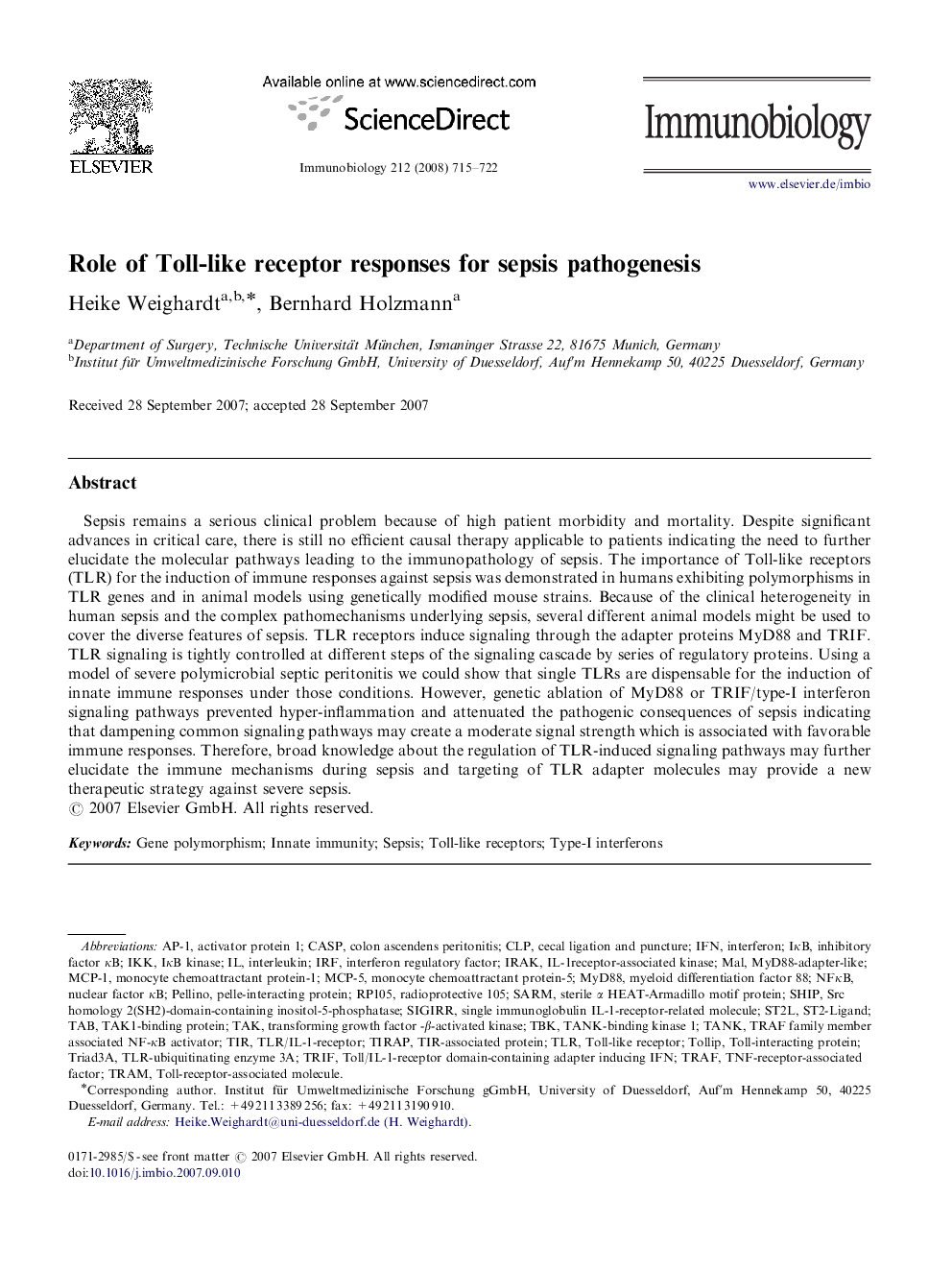| Article ID | Journal | Published Year | Pages | File Type |
|---|---|---|---|---|
| 2183911 | Immunobiology | 2008 | 8 Pages |
Sepsis remains a serious clinical problem because of high patient morbidity and mortality. Despite significant advances in critical care, there is still no efficient causal therapy applicable to patients indicating the need to further elucidate the molecular pathways leading to the immunopathology of sepsis. The importance of Toll-like receptors (TLR) for the induction of immune responses against sepsis was demonstrated in humans exhibiting polymorphisms in TLR genes and in animal models using genetically modified mouse strains. Because of the clinical heterogeneity in human sepsis and the complex pathomechanisms underlying sepsis, several different animal models might be used to cover the diverse features of sepsis. TLR receptors induce signaling through the adapter proteins MyD88 and TRIF. TLR signaling is tightly controlled at different steps of the signaling cascade by series of regulatory proteins. Using a model of severe polymicrobial septic peritonitis we could show that single TLRs are dispensable for the induction of innate immune responses under those conditions. However, genetic ablation of MyD88 or TRIF/type-I interferon signaling pathways prevented hyper-inflammation and attenuated the pathogenic consequences of sepsis indicating that dampening common signaling pathways may create a moderate signal strength which is associated with favorable immune responses. Therefore, broad knowledge about the regulation of TLR-induced signaling pathways may further elucidate the immune mechanisms during sepsis and targeting of TLR adapter molecules may provide a new therapeutic strategy against severe sepsis.
